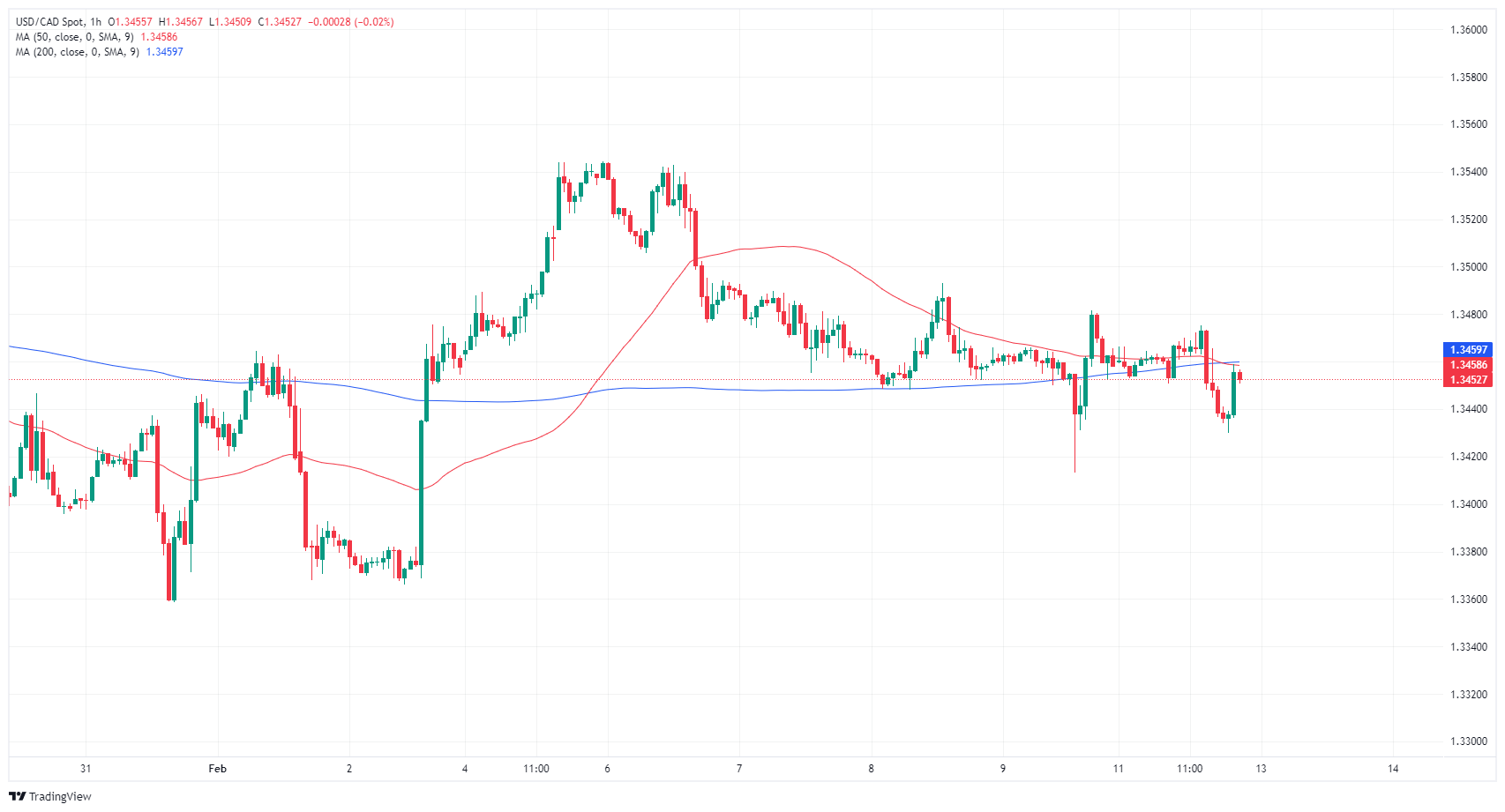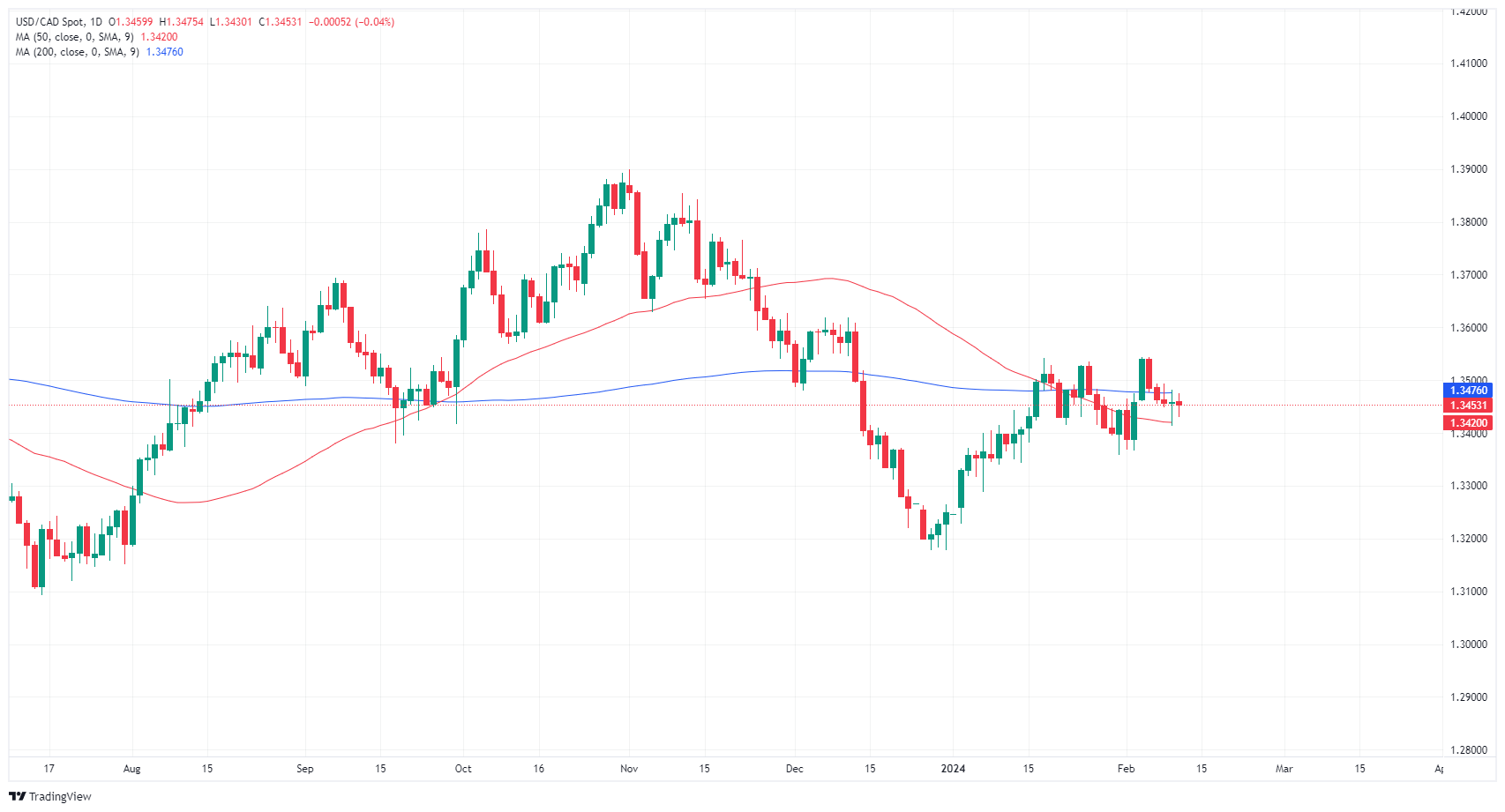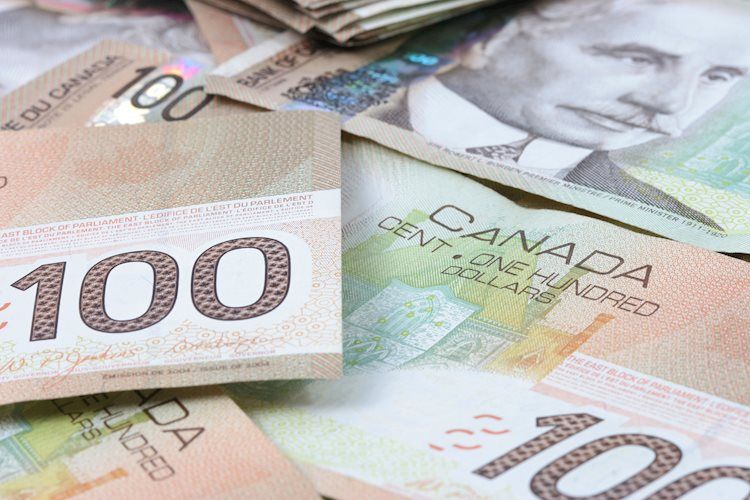- Canadian Dollar sees thin gains with support from steady Crude Oil bids.
- Canada sees a data-light economic calendar this week.
- Markets kick off the new trading week on a quiet note ahead of key US inflation data.
The Canadian Dollar (CAD) found some room on the high side on Monday, drifting into the green against most of its major currency peers in thin Monday trading. Markets have opened on a quiet note as investors gear up for a smattering of US economic data, with Tuesday’s US Consumer Price Index (CPI) inflation print a key focus for markets heavily invested in betting on rate cuts from the US Federal Reserve (Fed).
Canada has a light showing on the economic calendar this week, and CAD releases on the data docket are strictly low-impact. Thursday’s Housing Starts are expected to slightly improve, while Friday’s Wholesale Sales are forecast to tick slightly lower. Overall, CAD flows can expect to see Crude Oil markets and US Dollar (USD) risk appetite take the wheel this week.
Daily digest market movers: Canadian Dollar churns in familiar technical territory
- Quiet Monday markets give the Canadian Dollar a chance to recover into the high side, but the CAD remains positioned within familiar chart territory.
- Crude Oil found some support on Monday, helping to bolster the CAD.
- Saudi Arabia’s Energy Minister, Abdulaziz bin Salman Al Saud, stated that the Organization for the Petroleum Exporting Countries (OPEC) remains “ready to tweak oil policy at any time”.
- Fed officials continue to reiterate a more moderate policy stance than markets are hoping for.
- Fed’s Bowman: It is still too soon to project when or how much the Fed will cut rates.
- More Bowman: Many risks still remain for Fed’s inflation fight, doesn’t see cuts as appropriate in the ‘immediate future’.
- The New York Fed’s inflation outlook sees three-year inflation at 2.4% in January, down from December’s three-year outlook of 2.6%.
- According to the CME’s FedWatch Tool, markets are still pricing in nearly 60% odds of a May rate cut.
- Money markets are still holding out hope for six rate cuts through 2024.
Canadian Dollar price today
The table below shows the percentage change of Canadian Dollar (CAD) against listed major currencies today. Canadian Dollar was the strongest against the New Zealand Dollar.
| USD | EUR | GBP | CAD | AUD | JPY | NZD | CHF | |
| USD | 0.24% | 0.06% | -0.04% | -0.09% | 0.11% | 0.25% | 0.16% | |
| EUR | -0.23% | -0.16% | -0.28% | -0.31% | -0.12% | 0.03% | -0.06% | |
| GBP | -0.08% | 0.16% | -0.12% | -0.16% | 0.03% | 0.18% | 0.10% | |
| CAD | 0.04% | 0.28% | 0.10% | -0.05% | 0.15% | 0.30% | 0.20% | |
| AUD | 0.09% | 0.32% | 0.15% | 0.04% | 0.20% | 0.34% | 0.25% | |
| JPY | -0.11% | 0.13% | -0.02% | -0.15% | -0.20% | 0.15% | 0.05% | |
| NZD | -0.26% | -0.02% | -0.18% | -0.30% | -0.35% | -0.14% | -0.09% | |
| CHF | -0.16% | 0.08% | -0.10% | -0.20% | -0.25% | -0.05% | 0.08% |
The heat map shows percentage changes of major currencies against each other. The base currency is picked from the left column, while the quote currency is picked from the top row. For example, if you pick the Euro from the left column and move along the horizontal line to the Japanese Yen, the percentage change displayed in the box will represent EUR (base)/JPY (quote).
Technical analysis: Canadian Dollar sees green in quiet Monday chart action
The Canadian Dollar is broadly higher on Monday, seeing thin gains as markets gear up for another trading week. A quiet Monday has the CAD on the high side for the day, gaining around a third of a percent against the broadly weaker New Zealand Dollar (NZD) and Euro (EUR). The Canadian Dollar is higher against the US Dollar by a scant twentieth of a percent and close to flat against the Australian Dollar (AUD).
USD/CAD remains pinned below the 1.3500 handle after last week’s decline from the 1.3540 neighborhood, and intraday action continues to cycle the 200-hour Simple Moving Average (SMA) as near-term momentum remains limited.
Daily candlesticks have the USD/CAD trading back into a congestion zone just south of the 200-day SMA near 1.3475 as the 50-day SMA consolidates into the midrange near 1.3420, capping off bearish momentum and squeezing the pair into the middle.
USD/CAD hourly chart
USD/CAD daily chart
Canadian Dollar FAQs
The key factors driving the Canadian Dollar (CAD) are the level of interest rates set by the Bank of Canada (BoC), the price of Oil, Canada’s largest export, the health of its economy, inflation and the Trade Balance, which is the difference between the value of Canada’s exports versus its imports. Other factors include market sentiment – whether investors are taking on more risky assets (risk-on) or seeking safe-havens (risk-off) – with risk-on being CAD-positive. As its largest trading partner, the health of the US economy is also a key factor influencing the Canadian Dollar.
The Bank of Canada (BoC) has a significant influence on the Canadian Dollar by setting the level of interest rates that banks can lend to one another. This influences the level of interest rates for everyone. The main goal of the BoC is to maintain inflation at 1-3% by adjusting interest rates up or down. Relatively higher interest rates tend to be positive for the CAD. The Bank of Canada can also use quantitative easing and tightening to influence credit conditions, with the former CAD-negative and the latter CAD-positive.
The price of Oil is a key factor impacting the value of the Canadian Dollar. Petroleum is Canada’s biggest export, so Oil price tends to have an immediate impact on the CAD value. Generally, if Oil price rises CAD also goes up, as aggregate demand for the currency increases. The opposite is the case if the price of Oil falls. Higher Oil prices also tend to result in a greater likelihood of a positive Trade Balance, which is also supportive of the CAD.
While inflation had always traditionally been thought of as a negative factor for a currency since it lowers the value of money, the opposite has actually been the case in modern times with the relaxation of cross-border capital controls. Higher inflation tends to lead central banks to put up interest rates which attracts more capital inflows from global investors seeking a lucrative place to keep their money. This increases demand for the local currency, which in Canada’s case is the Canadian Dollar.
Macroeconomic data releases gauge the health of the economy and can have an impact on the Canadian Dollar. Indicators such as GDP, Manufacturing and Services PMIs, employment, and consumer sentiment surveys can all influence the direction of the CAD. A strong economy is good for the Canadian Dollar. Not only does it attract more foreign investment but it may encourage the Bank of Canada to put up interest rates, leading to a stronger currency. If economic data is weak, however, the CAD is likely to fall.
